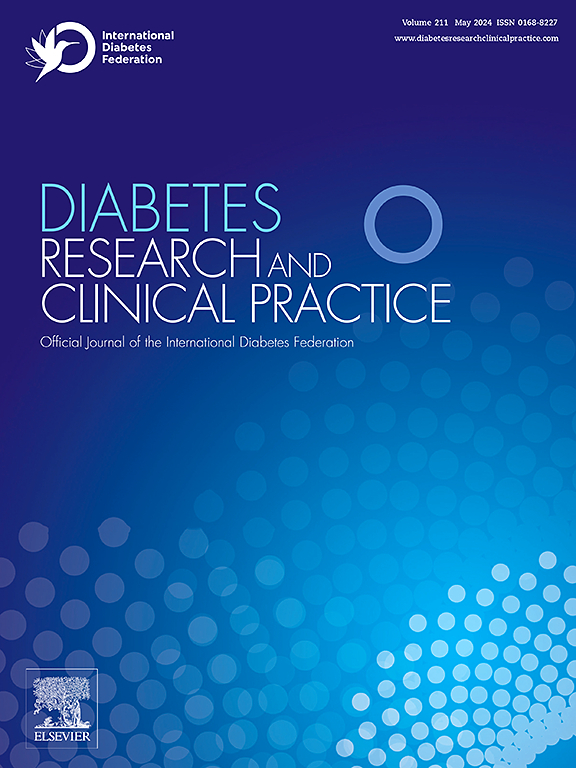Association of quality of care and long-term mortality risk for individuals presenting with ST-segment myocardial infarction (STEMI) by diabetes mellitus status: A nationwide cohort study
IF 6.1
3区 医学
Q1 ENDOCRINOLOGY & METABOLISM
引用次数: 0
Abstract
Aims
This study aimed to assess how diabetes influences the quality of care and longer-term outcomes in contemporary STEMI cohorts.
Methods
We analysed 283,658 adults hospitalised with STEMI from the United Kingdom Myocardial Ischaemia National Audit Project (MINAP) registry between 2005 and 2019. This was linked with Office of National Statistics data to provide out of hospital mortality outcomes. We compared longer-term outcomes depending on diabetes status and assessed the effect of quality of care using the opportunity-based quality-indicator score (OBQI).
Results
Individuals with diabetes were older (median age 68.7 vs. 65.5), underwent percutaneous coronary intervention less frequently (60 % vs. 63 %) and were less likely to achieve a door-to-balloon time of < 60 min (69 % vs. 75 %) or < 120 min (89 % vs. 92 %). Their adjusted all-cause mortality risk was higher during follow-up, from 30 days (HR: 1.49, CI: 1.44–1.54), to up to 10 years of follow up (HR: 1.54, CI: 1.52–1.57), compared to individuals without diabetes. Excellent inpatient care was associated with lower mortality rates within individuals with diabetes (Diabetes: HR 0.56, CI: 0.50–0.64, No diabetes: HR 0.62, CI: 0.58–0.67).
Conclusions
Individuals with diabetes have a higher risk of long-term mortality after STEMI. They experience delays in angiography and receive lower quality inpatient care.
求助全文
约1分钟内获得全文
求助全文
来源期刊

Diabetes research and clinical practice
医学-内分泌学与代谢
CiteScore
10.30
自引率
3.90%
发文量
862
审稿时长
32 days
期刊介绍:
Diabetes Research and Clinical Practice is an international journal for health-care providers and clinically oriented researchers that publishes high-quality original research articles and expert reviews in diabetes and related areas. The role of the journal is to provide a venue for dissemination of knowledge and discussion of topics related to diabetes clinical research and patient care. Topics of focus include translational science, genetics, immunology, nutrition, psychosocial research, epidemiology, prevention, socio-economic research, complications, new treatments, technologies and therapy.
 求助内容:
求助内容: 应助结果提醒方式:
应助结果提醒方式:


